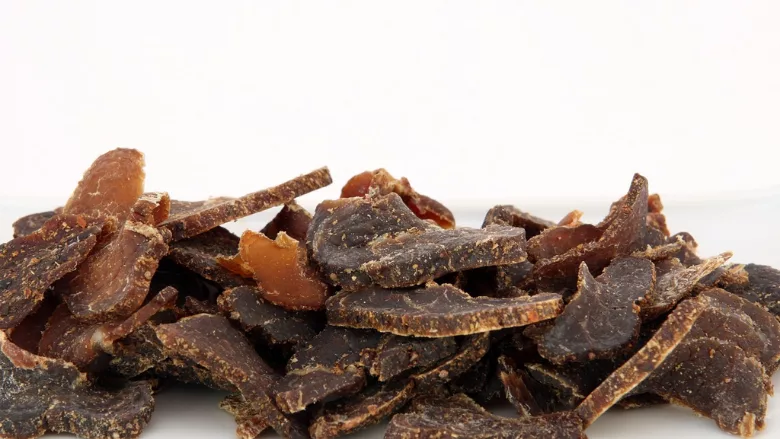A Melting Pot of Cultures—and Microbial Risks

Image credit: Shutterbug75 via Pixabay
The U.S. and Canada are melting pots of cultures, and one of the most evident expressions of this diversity can be found in the variety of ethnic foods available in markets. While the influx of these foods has brought new and exciting flavors to North American palates, it has also brought the risk of new microbial hazards. These hazards arise from the potential contamination of foods with pathogenic microorganisms that can cause foodborne illnesses. The presence of these hazards can be attributed to a variety of factors, including differences in food production practices, transportation conditions, and storage methods. In this context, it is essential to understand the potential microbial hazards associated with the influx of ethnic foods, as well as the measures that can be taken to minimize these risks and ensure the safety of consumers.
The Global Food Supply
To support North American consumers' desire for a diverse food supply, the U.S. imports about 15 percent of the food supply from more than 200 countries or territories.1 Each of these countries has different food safety systems and regulatory standards that cause food safety and adulteration concerns. A robust oversight plan needs to be in place to proactively ensure the food safety of these products for North American consumers. The U.S. Food and Drug Administration's (FDA's) Food Safety Modernization Act (FSMA) helps ensure the safety of the food supply by granting expanded authority to implement preventative controls and gives FDA oversight and enforcement authority to make sure that standards are being met.
Not only are new foods imported, but many people of diverse cultural backgrounds are looking to produce their traditional foods in North America for sale. Examples of these kinds of products include fermented; salt-cured; and dried, ready-to-eat (RTE) meat and poultry products. While growing in popularity, these products tend not to have a heat-lethality step like traditional American-style dried products such as beef jerky. Food products within this category include biltong, droëwors, summer sausage, bresola, and genoa salami. What is unique about these international meat and poultry products is that they require multiple interventions or processing steps to eliminate pathogens of concern. Processing steps such as fermentation, salt-curing, and drying—or a combination of the three—can be used to reduce pathogenic bacteria during processing. These processes utilize mechanisms such as reduced pH and water activity or increase in salt concentration to inhibit the growth of pathogens during processing.
Outbreaks Related to Ethnic Foods
Despite enhanced food safety measures and standards, there have been cases of foodborne outbreaks related to ethnic foods either imported or manufactured in the U.S. In 2014, there was a Listeria outbreak associated with Hispanic-style cheese that sickened eight people in the U.S.2 The cheese was produced by a small, family-owned dairy and sold at specialty food stores and farmers markets.
More recently in 2021, there were Salmonella outbreaks associated with salami sticks and Italian-style meats.3 Both of these products are typically fermented and dried, but are traditionally made without a heat lethality step. Unfortunately, these outbreaks were caused by under-processing and failing to achieve sufficient bacterial reduction. While traditional methods can make great foods, additional steps may need to be taken to ensure their safety for the consumer.
Looking for quick answers on food safety topics?
Try Ask FSM, our new smart AI search tool.
Ask FSM →
Biltong: A Case Study
Since some ethnic foods are processed in unconventional ways, they also require unconventional regulatory guidance to be produced in the U.S. Flexibility in the way manufacturers can comply with processing requirements allows the producer to make an authentic product while still ensuring its microbial safety. A case study example of this is with biltong, a South African-style dried beef product that is made without a heat lethality step. To make biltong, whole lean beef loins are marinated in a vinegar, salt, and spice mixture and then allowed to dry at ambient temperature and humidity for a period of 7–10 days.
Traditionally, American-style beef jerky products are manufactured under the guidance of the U.S. Department of Agriculture Food Safety and Inspection Service's (USDA-FSIS') Guideline for Meat and Poultry Jerky Produced by Small and Very Small Establishments.4 This guidance states that beef jerky products must be manufactured under relative humidity that is maintained at excess of 90 percent during cooking and generally cooked in excess of 165 °F (74 °C). Additionally, the final product must achieve a water activity of less than or equal to 0.85 (less than or equal to 0.91 if vacuum packaged).4
However, the traditional biltong process does not maintain a high temperature or humidity during processing and fails to meet these guidelines. Therefore, a processor must demonstrate or validate to USDA-FSIS that its process can achieve sufficient pathogen reduction. At this point, the processor has some flexibility to demonstrate the efficacy of its process. It can either: 1) perform testing of every lot of edible ingredient before processing to ensure that no Salmonella is present, in addition to demonstrating an overall > 2-log process reduction of Salmonella; or 2) demonstrate an overall > 5-log reduction of Salmonella during process without any additional ingredient testing.5 There is an obvious financial and time benefit to selecting the second option, despite it being a higher microbial threshold to achieve. With these alternative approaches to validate biltong processing, biltong can be safely and authentically manufactured. Today, biltong is being sold in major box-chain stores in the U.S. with many companies looking to expand their sales to Canada, Mexico, and the UK.
Where Do We Go From Here?
Working with regulatory agencies is key to having alternative approaches to manufacture these foods safely while preserving the authenticity of the products. Efforts are being made in the regulatory sector to accommodate these products as they grow in popularity. USDA-FSIS recently released a Ready-to-Eat Fermented, Salt-Cured and Dried Products Guideline that is now available for public comment. The guideline addresses how to safely manufacture these alternatively processed RTE foods that do not have a traditional heat lethality step.6
Additionally, more validation studies in the scientific literature that companies could apply would be beneficial for large and small processors. If a manufacturer's process does not conform to traditional manufacturing guidelines for its product, then it must demonstrate lethality of its process, usually through validation studies. These studies often can be time-consuming and expensive, especially for small establishments. Manufacturers can use these published literature as evidence for their process so long as the processing parameters (temperature, humidity, drying time, etc.) are aligned. Several available studies have validated the processing of non-heat lethality RTE meat products.7–10 However, more studies are needed to keep up with the growing inclusion of these products.
North Americans have a rich history of welcoming immigrants, and this has led to a diverse array of ethnic foods being available. People from all over the world have brought their culinary traditions with them, creating a vibrant and varied food scene that must be preserved through scientific approaches that support the microbial safety of these products.
References
- U.S. Food and Drug Administration (FDA). FDA Strategy for the Safety of Imported Foods. 2019. https://www.fda.gov/food/importing-food-products-united-states/fda-strategy-safety-imported-food.
- Centers for Disease Control and Prevention (CDC). "Oasis Brands, Inc. Cheese Recalls and Investigation of Human Listeriosis Cases (Final Update)." December 4, 2014. https://www.cdc.gov/listeria/outbreaks/cheese-10-14/index.html.
- U.S. Department of Agriculture Food Safety and Inspection Service (USDA-FSIS). "Salmonella Outbreaks Linked to Italian-Style Meats: Outbreak Investigation After Action Review." https://www.fsis.usda.gov/sites/default/files/media_file/2022-04/FSIS-After-Action-Review-2021-09_2022-01.pdf.
- USDA-FSIS. FSIS Compliance Guideline for Meat and Poultry Jerky Produced by Small and Very Small Establishments. 2014. https://www.fsis.usda.gov/sites/default/files/import/Compliance-Guideline-Jerky-2014.pdf.
- Nickelson, R., J. B. Luchansky, C. Kaspar, and E. Johnson. "Dry Fermented Sausage and Escherichia coli O157:H7 Validation Research. An Executive Summary Prepared by the Blue Ribbon Task Force of the National Cattlemen's Beef Association." Research Report No. 11-316. 1996.
- USDA-FSIS. FSIS Ready-to-Eat Fermented, Salt-Cured, and Dried Products Guidelines. May 2023. https://www.fsis.usda.gov/guidelines/2023-0002.
- Naidoo, K. and D. Lindsay. "Pathogens associated with Biltong product and their in vitro survival of hurdles used during production." Food Protection Trends 30, no. 9 (2010): 532–538.
- Watson, S., N. Gaydos, S. Egolf, and J. Campbell. "Fate of Escherichia coli O157:H7, Salmonella spp., and Listeria monocytogenes During Curing and Drying of Beef Bresaola." Meat and Muscle Biology 5, no. 1 (2021): 14, 1–8.
- Burnham, G. M., D. J. Hanson, C. M. Koshick, and S. C. Ingham. "Death of Salmonella serovars, Escherichia coli O157:H7, Staphylococcus aureus and Listeria monocytogenes during the drying of meat: A case study using Biltong and Droëwors." Journal of Food Safety 28, no. 2 (April 2008): 198–209. https://onlinelibrary.wiley.com/doi/10.1111/j.1745-4565.2008.00114.x.
- Karolenko, C. E., A. Bhusal, J. L. Nelson, and P. M. Muriana. "Processing of Biltong (Dried Beef) to Achieve USDA-FSIS 5-log Reduction of Salmonella without a Heat Lethality Step." Microorganisms 8, no. 5 (2020): 791. https://doi.org/10.3390/microorganisms8050791.









